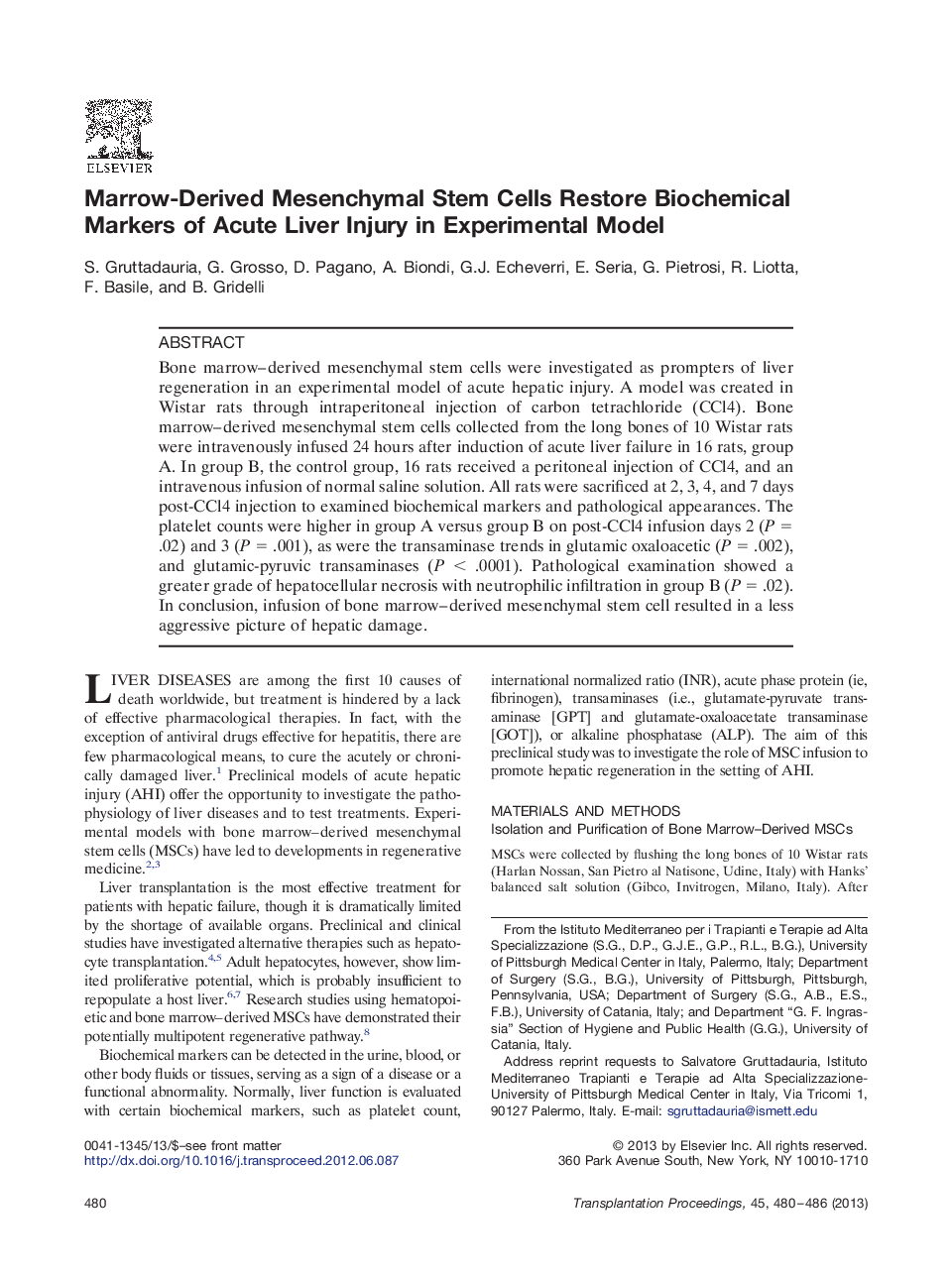| Article ID | Journal | Published Year | Pages | File Type |
|---|---|---|---|---|
| 4256128 | Transplantation Proceedings | 2013 | 7 Pages |
Bone marrow–derived mesenchymal stem cells were investigated as prompters of liver regeneration in an experimental model of acute hepatic injury. A model was created in Wistar rats through intraperitoneal injection of carbon tetrachloride (CCl4). Bone marrow–derived mesenchymal stem cells collected from the long bones of 10 Wistar rats were intravenously infused 24 hours after induction of acute liver failure in 16 rats, group A. In group B, the control group, 16 rats received a peritoneal injection of CCl4, and an intravenous infusion of normal saline solution. All rats were sacrificed at 2, 3, 4, and 7 days post-CCl4 injection to examined biochemical markers and pathological appearances. The platelet counts were higher in group A versus group B on post-CCl4 infusion days 2 (P = .02) and 3 (P = .001), as were the transaminase trends in glutamic oxaloacetic (P = .002), and glutamic-pyruvic transaminases (P < .0001). Pathological examination showed a greater grade of hepatocellular necrosis with neutrophilic infiltration in group B (P = .02). In conclusion, infusion of bone marrow–derived mesenchymal stem cell resulted in a less aggressive picture of hepatic damage.
